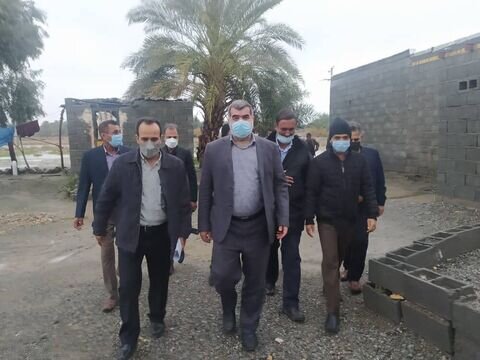50% of rural houses retrofitted

TEHRAN – Some 50 percent of houses in rural areas of the country have so far been retrofitted, Akbar Nikzad, head of the Housing Foundation of the Islamic Revolution, has said.
According to the plan, 200,000 houses are to be retrofitted annually, and in this regard, by the end of this year (March 2023), we will celebrate the end of the retrofitting of rural housing in the country, Nikzad added.
He also announced the preparation of the first phase of the Andimeshk National Housing Action Plan, including 220 units, by the next 10 months, IRIB reported on Friday.
A total of 31 trillion rials (nearly $103 million) has been approved for the eradication of deprivation in villages.The Action Plan is being implemented in 2 phases with an area of eight hectares. A total of 500 houses will be built in Khuzestan province.
$103m for rural development
A total of 31 trillion rials (nearly $103 million) for the eradication of deprivation in rural areas was approved by the Majlis (Iranian Parliament) in the budget bill for the current Iranian calendar year (March 2022- March 2023).
The comprehensive development plans aim to develop rural areas in line with cultural, economic, and social conditions, as well as housing provision for the rural residents and improving environmental services.
There are around 40,000 villages in the country with more than 20 households, for all of which comprehensive development plans have been approved every 10 years.
Development of rural areas
Currently, 26 percent of the country's population lives in villages, around 39,000 villages have more than 20 households and 23,000 villages have less than 20 households.
Thus, more than 97 percent of the country's rural population lives in villages with over 20,000 households.
In Iran, where villages account for generating 20-23 percent of the value-added in the country, the development of rural areas has been always a top agenda of the government’s activities.
Many efforts have been made over the past couple of years by the government to support villagers and slow down the trend of migration from rural areas to cities.
Rural tourism, agritourism, religious tourism, and ecotourism are alternatives or complementary economic activities that could further stimulate rural development while decreasing rural community dependency on one main economic sector (agriculture, forestry, energy, or mining).
Since 2003, some 37,919 village administration offices have been established nationwide, offering services to about 95 percent of the country's rural population.
FB/MG
Leave a Comment